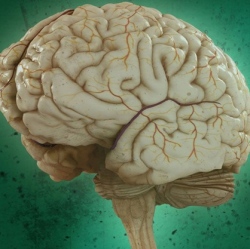
To understand the mechanisms of autism, researchers grew miniature human brains from the cells of autism patients. The resulting brain organoids revealed that a genetic mutation causes the brain to overproduce inhibitory neurons, which dampens how signals are transmitted within the brain.
Despite advances in the past few years, researchers still don’t know what causes Autism Spectrum Disorder (ASD). They’re pretty sure that genetic and environmental factors come together to create the neurological conditions that result in impaired social interaction. Past studies have focused on the genetic mutations found in those with ASD. While that has revealed a handful of mutations that may cause the disorder, that only accounts for one to two percent of autism patients. Researchers had been using the genetics to arrive at the biology, and it was proving to be pretty challenging.
For this study, the researchers decided to take a different tack: start with the biology to arrive at the genetics. They took skin cell samples from four autism patients who had enlarged brains, which is characteristic of one fifth of patients with the disorder. They also sampled the patients’ unaffected fathers to provide a point of comparison. They then converted the skin cells to stem cells and grew them into miniature brains, or “brain organoids,” that mimic early brain development.
After letting the organoids develop for a month, the researchers found an imbalance between the inhibitory neurons that dampen signals in the brain and those that conduct it. This happened because the genes that create the inhibitory neurons were overexpressed, while the ones that create the excitatory neurons weren’t affected. By suppressing a single gene that was overexpressed, the researchers were able to correct the imbalance, a promising breakthrough that could lead to treatments (or even a cure) for autism.
